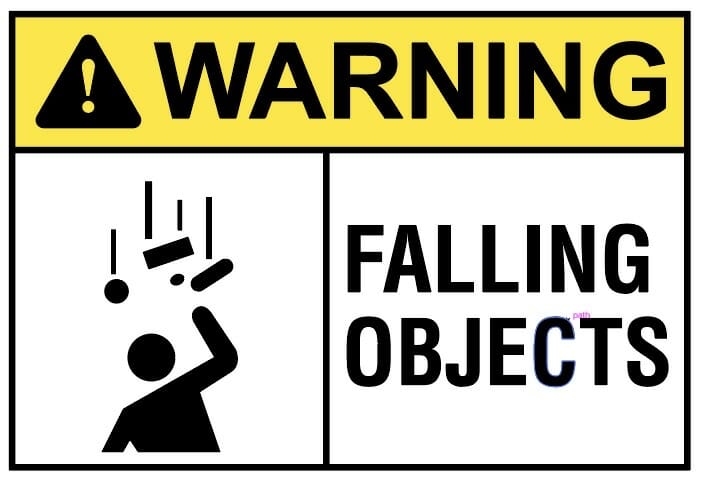Dropped Object Awareness
New Braunfels, TX, March 22, 2023

Fall protection for the worker has come a long way, but it’s only part of the picture. There’s another component of Safety at Heights that is only recently getting the attention it deserves—Objects at Heights. Dropped Objects continue to pose the number one risk of serious injuries, fatalities, and equipment damage in several industries worldwide. Similar statistics apply to leisure activities and home life too. Collaborative campaigns and directives have resulted in better-dropped object prevention awareness, but the overall trend shows no sign of significant improvement. A host of factors can contribute to a dropped object incident. It is important to consider these during worksite hazard identification. Energy sources such as gravity, wind, heave, and mechanical motion can all contrive to initiate a sequence of events that result in something falling. Add corrosion, lack of awareness, and inadequate inspection or maintenance and you can almost guarantee a dropped object will occur. Statistics show that around 30% of all dropped object incidents are related to design, technical or mechanical issues but almost half can be attributed to human factors. We cannot simply accept that dropped objects are an inherent hazard in our working environment. A system should be put in place to identify and prevent, and where reasonably practicable, manage the risks associated with dropped objects. Today, we would like to provide three key points on how to help prevent dropped objects…
- Identify all drop hazards tasks
- Utilize the Three T’s to secure drop hazards
- Secure the Drop Z
Identify all drop hazards
Task Planning and Risk Assessment is a key step to being proactive rather than reactive. If we are proactive, we can identify, mitigate, and even eliminate potential dropped objects. Our pre-job meeting is a great opportunity to identify what tools we are utilizing for work at heights and what additional means of securement is needed. If we plan better, we can be better organized and not have to think on the fly, which in turn could contribute to a dropped object. Additionally, during our pre-job meeting, discuss and identify the potential path of a dropped object. This will help us determine the layout of our drop zone. A dropped object does not always necessarily fall straight down and often deflects off pre-installed equipment or structures. Remember, a little bit of planning and assessment is often the difference in having an incident or remaining incident free.
Utilize the Three T’s to secure drop hazards
Trapped, Tethered, and Topped are the three Ts for objects at heights. Trapped is the process of creating a connection point on tools that may not already have one or has one but is not properly rated. To properly tether off our tools we need to make sure that it has a proper connection point. Remember, duct tape and para code are not an option. Tethered, is the connection point between the tools/gear and connection point. When using tool tethers ensure they have proper connections on each end for the tools and anchors being used. Lastly, we have topped. This is a secured closure or container for our tools and equipment. No longer can we just get a paint bucket and fill it up with tools and hope for the best when hoisting. Ensure our tool pouches, bags and hoist buckets/bags have a secure closure or “top” that can cover contents and prevent them from spilling if tipped. Let us not rely on yelling “headache” and do everything possible to protect on coworkers below us.
Secure the Drop Zone
Now that we have covered two key points in preventing a dropped object let’s talk about our first line of defense in the event, we do have a dropped object. That is a drop zone. A ‘Drop Zone’ is an area at ground level in which it is foreseeable that items would land if they were dropped or if they were to fall from a structure. Drop-zones’ should be imposed around the work at-height area. Prior to any work beginning, clearly communicate and identify the drop zone to all that are on-site. Only the crewmembers actively involved in the job, are permitted to go inside the drop zone. We need to remember to stay disciplined in monitoring our drop zone. Always pay close attention to outside parties i.e., another tech or someone from the public, and ensure we stop the job to clearly identify our drop zone to them. Remember to always clearly define the drop zone with signage warning of the overhead danger and designating the drop zone as a hard-hat area should be prominently displayed around the perimeter. Drop Zones work if we obey them.
If you would like more information on this topic or any other safety-related topic, please reach out to the Ontivity safety team at safety@ontivity.com, and we will get you taken care of.
